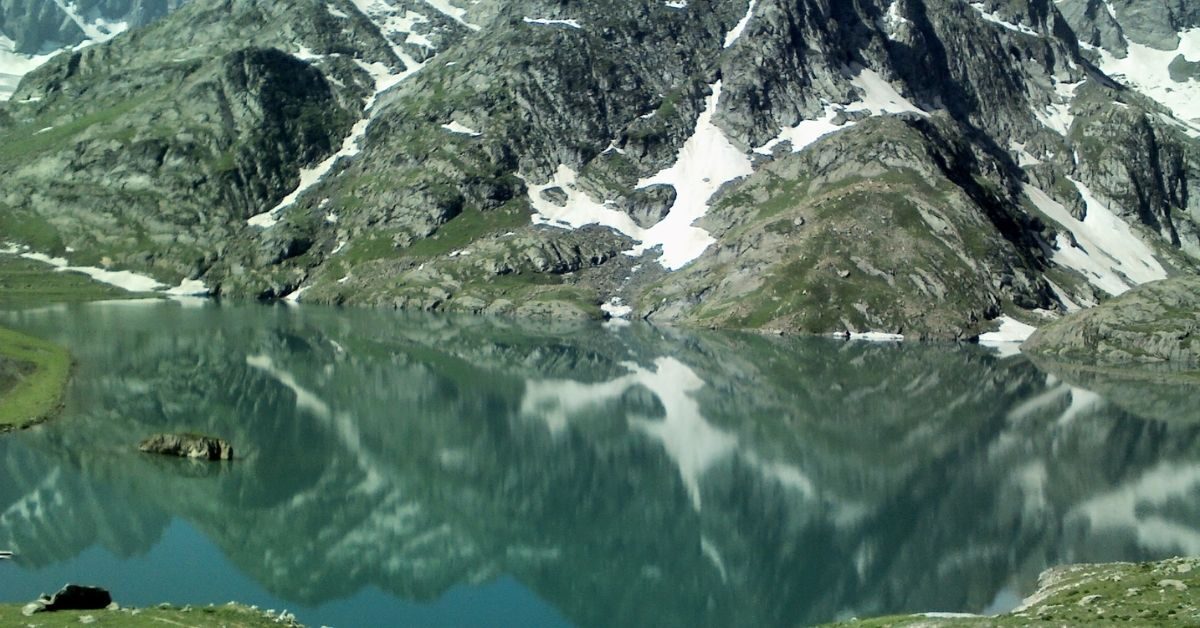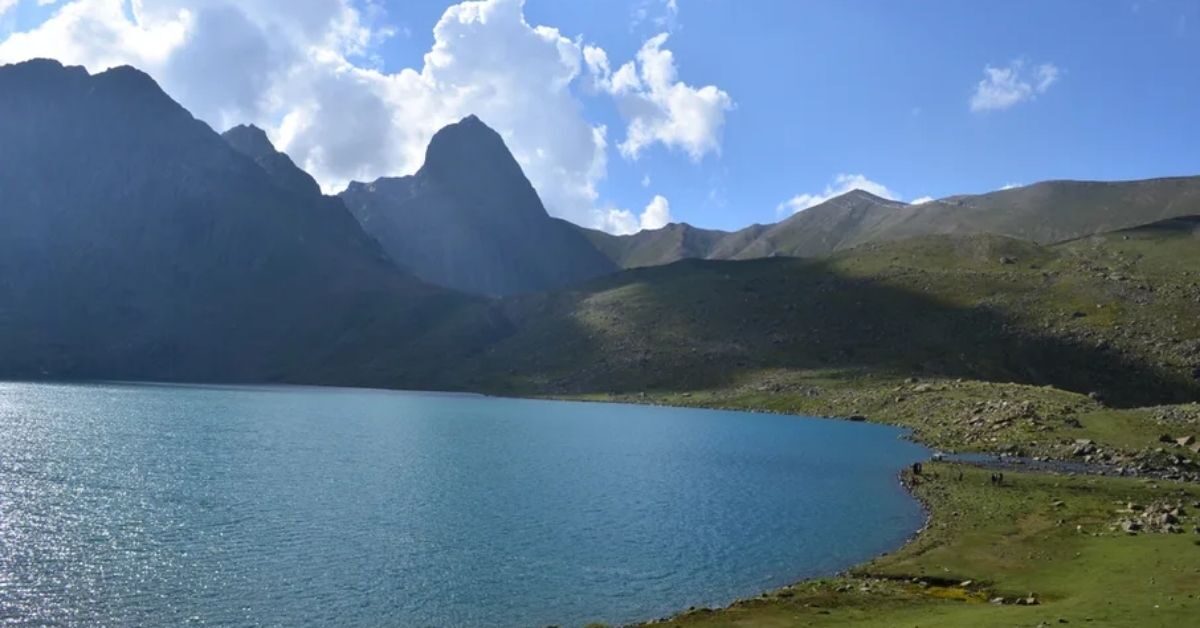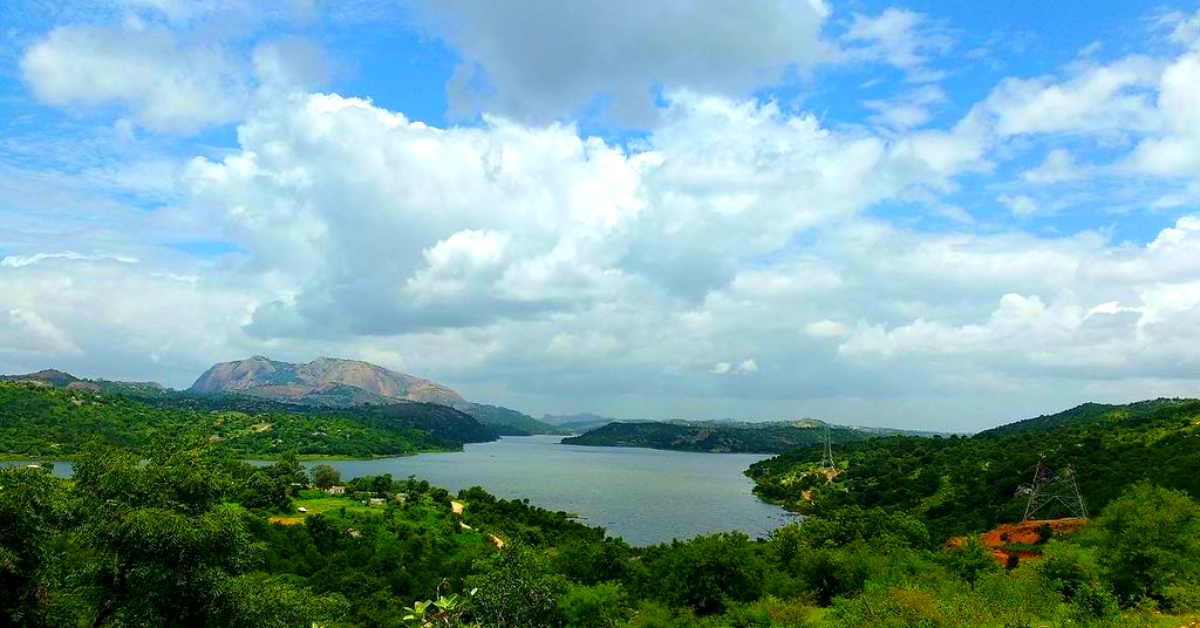The Vishansar Lake is an alpine high altitude oligotrophic lake situated in Sonamarg. Vishansar is a short name for Vishnusar Lake. This lake has significance for Kashmiri Pandits. Vishansar in Kashmiri means the lake of Vishnu. One can find various types of fish in the lakes. The lake is frozen during the Winter Season. During the summer season, the lake is surrounded by green lush meadows where local shepherds graze their flocks. The Lake with its splendid beauty, snow-covered mountains filled with small glaciers, and the meadows around, with alpine flowers, is a visual treat for the trekkers in the Kashmir Valley. It is connected by the Krishansar Lake and glaciers.
The Vishansar Lake is the source of the Neelum River which flows towards the north up to Badoab. The Great Lakes Trek of Kashmir is not only challenging but the scenic beauty encourages you to witness it. The memorable trekking is an experience of the ‘Heaven on Earth’ in Kashmir.
How many days does it take to complete the trek?
Kashmir Alpine Lakes trek takes 15 days to complete. The trek in Kashmir covers Tarsar Lake, Vishansar and Krishansar Lake, and Gangabal Lake. It starts from Srinagar and cutting and crosses through lush, gushing rivers, meadows, and mountains one accomplishes the trek of alpine lakes in Kashmir.
Day 1
Arrive at Srinagar Airport, and drive to Sonamarg.
Day 2
Sonamarg to Nichnai via Shekdur (9 to 10 km)
The Nichnai trek goes about for 6 – 7 Hrs, starting with 3-4 km from Sonamarg and reaching a roadside eatery, from where you can bag up all the required commodities for the day. Here onwards, the trek will be a gradual one and alongside the Sindh River, it will take one through maple and pine forests. Completing the hike through the forests, one can witness the stunning views of the Sonamarg Valley and picture-worthy streams, the trek will descend down and will take you to the snow-covered Shekdur Range. Relax around the vicinity for a while before you start trekking towards the Nichnai, which is located at around 11,500 ft above sea level camping Nichnai.
Day 3: Nichnai to Vishansar Lake (13 km)

Began the trek towards the Nichnai Pass and enjoy the stunning views of the lush valleys and the untouched beauty of the region. Hereafter, cross the river and continue hiking through the banks of the river and arrive at the Nichnai Pass or the Vishansar Berry. Arriving at the pass, which is located 13,500 m above sea level, enjoy the meticulous beauty of the pass and the snow-covered peaks all around it.
Hereafter, the trek will undergo a steep downwards and will take you to a pictorial meadow of colorful flowers; while on this trek, you can also catch glimpses of a cascade that finally joins a river. Here onwards, continue with the hike and upon arriving at a valley, continue towards the end and arrive at the campsite. Gazing on the left of this trail, you can also witness captivating views of the Himalayan Range and also the Vishansar Lake camping at Vishansar Lake.
Day 4: Accommodation in Vishansar
Trek would be a light one as you adjust yourself to the weather and rest at Vishansar and camping at Vishansar.
Day 5: Trek from Vishansar to Gadsar (via Krishansar and Gadsar Pass) (11 km)
On a chilly morning, witness the Kishansar Peak casting its reflection on the azure lake waters. Start the trek for the day towards the lakeside and reach Kishansar Peak, which is situated around 500ft above the campsite. Here onwards, move to the other side of the water reservoir. The trek till here consists of both easy and tough land.
Later part of the day, trek towards the Kishansar Lake and finally make it to the Gadsar Pass which is perched at a height of 13,800 ft and is the highest point of this trek. From the pass, pass through a flowery meadow and some of the pictorial lakes; Yamsar is one of these lakes. From here, continue with descent and after crossing Iris, reach the Gadsar Lake. A picturesque lake, it is adorned with the stunning beauty of exotic flowers and snow on both sides. Reaching at the lakeside, report to the nearest Army Camp and complete the formalities of getting permission to pass Gadsar; ID proofs are a must for this.O/N Camping at Gadsar.
Day 6: Gadsar to Satsar (12 km)
Your day will begin with a walk from the army camp towards the stream. Prepare yourself for varied terrains from super steep, flat, and even land. Take a short break at Maengandob which is fringed by mountains. Reach the first of Satsar lakes, which is a group of seven different lakes. Then follow the same procedure of yesterday with the army officials. Set camps near the surreal first lake of Satsar.O/N Camping at Satsar.

Day 7: Satsar to Gangabal Twin lakes (9 km)
this is the day when you have to push yourself from the physical and mental limits. Trekking through rocks and boulders-ridden terrain, pass the last of the Satsar lakes, and start hiking downwards for half an hour till you arrive at the forest line. Here onwards, start moving upward and reach an altitude of 13,400 ft. During this climb, one can witness several ridges at different heights and the quaint Gujjar huts as well. You can see the fascinating views of the twin lakes: Gangabal and Nundkol. Which are connected to each other by a picturesque stream and are known for trout fishing.
You need to trek through a sharp and rocky trail and make it to a stream. You will reach a lush meadow that goes towards Nundkol Lake. Trekking for around 20 minutes from Nundkol Lake, you will finally arrive at Gangabal Lake by crossing the bridge.
Day 08: Trek from Gangabal to Naranag (12 km, 7 hours)
On your last day of the Kashmir Lake Trek, start from the Gangabal camp, ramble on grassy land dotted. Walk and reach Naranag, the last stop of your trek. Reach Naranag Village in Ganderbal District. Drive back to Srinagar.
Day 09: Departure, Return to Srinagar Airport
The journey comes to an end with pleasant memories of the Glacial Trek of Kashmir.
One will surely carry a box of memories from the trek of Kashmir lakes with the splendid beauty of paradise on heaven which stays in the mind of the travelers, as they remember the beautiful mountains, lakes, and natural beauty of our country is blessed with.
Follow India Chalk on Instagram for more amazing travel content. You can share your travel story with us. Reach out to us on email at contact[at]ndiachalk[dot]com. This blog is curated by India Chalk and written by Soumya S.






2 Comments